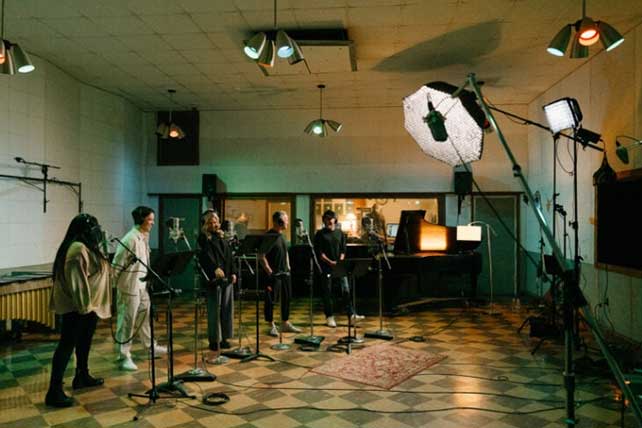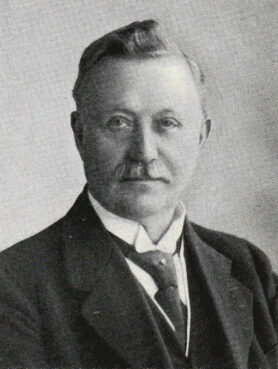The hymn has been played over 2.5 million times on digital streaming platforms in the month since its release on Jan. 26 by Capitol CMG Publishing and Integrity Music. Phil Loose, one of the trustees, said it is too soon to know how much money the recording has raised.
The Stuart Hine Trust, which has supported Christian outreach and Bible translation, intends to use the proceeds from the writing, production and royalties of the recording to provide humanitarian aid and support rebuilding efforts in Eastern Europe.
Carl Boberg. (Photo courtesy Wikipedia/Creative Commons)
Over its lifetime the hymn has faced moments of relative obscurity and waves of popularity. It dates to 1885 or 1886 when Swedish editor Carl Boberg got caught in a thunderstorm and wrote the first version, then titled “O Store Gud” (or “O Mighty God”), after marveling at the calm that followed it. It was published in a newspaper, then set to music in his country. Though some of its history is hazy, music professor C. Michael Hawn wrote that an English translation made it into some hymnals but “never caught on.”
In the early 1900s, the words were translated into German and then Russian, which Hine heard sung while in the Eastern European mountains. He paraphrased the first two verses in English and was inspired to write the third and fourth verses of “How Great Thou Art” over a 14-year period, according to his trust’s website.
The website quotes him as writing that “the thoughts of the first three verses of How Great Thou Art! were born, line by line, amid my unforgettable experiences in those mountains.” The fourth, which begins with the words “When Christ shall come with shout of acclamation,” was written in 1948 to assuage the grief of Eastern Europeans after the end of World War II.
In the 1950s, the hymn began to have what Redman called a “wildfire moment” when singer George Beverly Shea started using it at the “crusades” of evangelist Billy Graham — including one at New York’s Madison Square Garden that was broadcast on television and lasted 16 consecutive weeks.
Shea wrote in his 2004 book, “How Sweet the Sound: Amazing Stories and Grace-filled Reflections on Beloved Hymns and Gospel Songs,” about how he changed the lyrics “consider all the works thy hands have made” to “consider all the worlds thy hands have made” and modified “I hear the mighty thunder” to “I hear the rolling thunder.”
“I got a bang when I used to hear Elvis Presley sing my two words,” he said in a Religion News Service interview about the rock-and-roll singer, who won his first Grammy for his 1967 rendition of the hymn and earned another for his 1974 live version of it.

Brian Hehn. (Photo by Serkan Zanagar)
Brian Hehn, director of The Hymn Society’s Center for Congregational Song, said the hymn lends itself to both congregational singing and solo and duet voices, as in Redman’s and Wong’s new version.
“I think it does point to the general singability of the song,” he said. “And that’s one of the reasons why it’s very popular, right? Because congregations can sing it. It feels good to sing.”
The hymn, which was popular in the society’s March Madness-type tournament in 2019, is sung both in churches that use contemporary Christian music and is featured in hymnals used in mainline Protestant, African American and Catholic churches.
Hehn notes that the new version leaves out the second verse often found in hymnals and that the new verse moves more quickly to the hymn’s focus on a belief in the atonement of Jesus.
“The new stanza also acknowledges the tension between living in the ‘in between’ time where Christ’s victory over death has been completed and yet there is still death and sin because that final day when all tears are wiped away has not yet arrived,” Hehn added via email.
“With the nod towards that ‘in between’ time and the addition of the word ‘hope,’ they’ve transformed what was originally a song of praise appropriate for any season into what I read as an Advent hymn!” he wrote.


